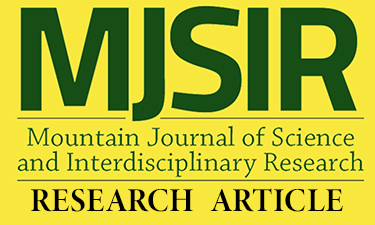Lesser Yam (Dioscorea esculenta) Grown and Knowledge Transfer Among Indigenous People in Northern Philippines
Main Article Content
Abstract
Lesser yam (D. esculenta) or tugui, is a perennial crop cultivated to supplement human food and cash needs. Reference data on indigenous varieties is limited. Hence, this documentation utilizes secondary data, key informant interviews, and field observation to determine varieties known or cultivated and the retention or loss of traditional knowledge regarding this crop among 13 indigenous peoples (IPs) in the Northern Philippines. The IPs named 25 cultivated and four wild species, 12 of which were classified as plenty, 11 as few, and two as rare or endangered. The Aeta, the Biga-Kalinga, the Buhid-Mangyan, and the Tingguian call the lesser yam, respectively as Limeng, Atap-ontoy, Borot, and Anayed or Boga. Most of the lesser yam varieties mature in eight months and were either sweet (six varieties) or bitter (four varieties). The Bago group had the highest mean score (90%) in traditional knowledge while the Ibaloi group had the lowest mean score (34%). Traditional knowledge on lesser yam is retained and even increased between the middle-aged group (36-56 years) and the older-aged group (57-77 years) of male and female Iyattukas, and male Tingguians. On the other hand, this knowledge is lost between the younger-aged group (15-35 years) and a middle-aged group of male and female Ibalois and Iyattukas. The decrease in knowledge on lesser yam was 1-3 percent annually between the youngeraged group and the middle-aged group. Only those born before the 1980s retained traditional knowledge about the diversity and variety of roots and tubers, cropping practices, and utilization. Loss of knowledge especially in the younger generations of the IPs can result in the loss of varieties, which may affect food security and even employment among the IPs.
Article Details
References
Chorol, S., Angchok, D., Angmo, P., Tamchos, T., & Singh, R.K. (2018). Traditional knowledge and heirloom root vegetables: Food security in trans-Himalayan Ladakh, India. Indian Journal of traditional Knowledge, 17(1): 191-197.
Dar, W.D. (2017). Inang Lupa. Official Newsletter of the InangLupa Movement Inc. Vol.8 No. 9. September 2017 issue.
Dayo, H.F., Labios, J.D. & Wagan, A.M. (1998). Rootcrop Agriculture in Batanes: Diversity and Transformation of an Island Food System. In: G. Prain and C.P. Bagalanon. Conservation and Change. Farmer Management of Agricultural Biodiversity in the Context of Development. Users Perspective with Agricultural Research and Development, Los Banos, Laguna.
Gayao, B.T., Meldoz, D.T., & Backian, G.S. (2013). Indigenous Knowledge, Technology and Role of Roots and Tubers among the Ethno-linguistic Groups in Northern Philippines Series 1-14. December 2013-2014. NPRCRTC-Benguet State University, La Trinidad, Benguet, Philippines.
Gayao, B.T., Meldoz, D.T., Backian, G.S., & Botangen, E.T. (2015). Lesser Yam Collections, NPRCRTCBSU and Kadasan Farm. Northern Philippines Root crops Research and Training Center-Benguet State University, La Trinidad, Benguet, Philippines.
Legaspi, N.B., & Malab, B.S. (2013). Increasing Productivity of Yam (Dioscorea esculenta) through Improved Cultural Management Practices. Mariano Memorial State University Science and Technology Journal, 3. https://www.semanticscholar.org/paper/IncreasingProductivity-ofYam-(Dioscorea-through-Legaspi-Malab/124296f09367b384a694a58c723d65b29475a592
Specialty Produce. (n.d.). Tugi Root Information and Facts. https://specialtyproduce.com/produceTugi_Root_14679.php
The New Zealand Digital Library. (n.d.) Lesser Yam (Dioscorea esculenta). The University of Waikato. http://www.nzdl.org/gsdlmod
Zent, S. (2010). A VITEK. Case Study. In: Vitality Index of Traditional Environmental Knowledge: Introductory Guide. Terralingua. http://www.bipindicators.net/vitek/www.terrlingua.org/vitek

